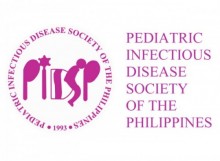Journal 2019 Vol.20 No.1
Comparison of Various Methods of Detection of Hypoxemia and Correlation of Hypoxemia with Clinical Features among Pediatric Patients 3 Months to 5 Years Old with Community-Acquired Pneumonia at a Tertiary Hospital Emergency Room
Francesca Mae T. Pantig, M.D., & Salvacion R. Gatchalian, M.D.,FPPS,FPIDSP,FPSMID
Abstract
Introduction: Pulse oximetry is frequently utilized as a rapid, non-invasive, point-of-care alternative to arterial blood gas analysis in measuring oxygen saturation of children with pneumonia.
Objectives: To compare portable fingertip pulse oximetry saturation (SpO2PF), handheld pulse oximetry saturation (SpO2H) and arterial oxygen saturation (SaO2) in detection of hypoxemia, and correlate hypoxemia with clinical features in children with pneumonia.
Methodology: This was a prospective, observational, cross-sectional study involving patients 3 months to 5 years old with pneumonia. Oxygen saturation was measured using a portable fingertip pulse oximeter, a handheld pulse oximeter, and arterial blood gas analysis.
Results: Eighty-six children were included. SpO2 PF underestimated oxygen levels by 0.126% (95% CI -0.240 to 0.491), while SpO2H underestimated it by 0.323% (95% CI -0.075 to 0.721). Between portable and handheld readings, the mean difference was 0.198% (95% CI -0.089 to 0.484). Across the three methods, limits of agreement ranged from -3.388 to +4.035%. There was no statistically significant difference in variance among the three measurements. Children with tachypnea (cOR 2.623, 95% CI 1.06 – 6.48, p = 0.037), difficulty breathing (cOR 6.316, 95% CI 1.96 – 20.34, p = 0.002), and subcostal retractions (cOR 2.842, 95% CI 1.05 to 7.69, p = 0.040) were more likely to have hypoxemia.
Conclusion: Pulse oximetry closely correlates with arterial blood gas analysis within acceptable limits of agreement and with no significant differences in variance among measurements. Difficulty breathing, tachypnea and subcostal retractions were significantly more likely to be observed in hypoxemic children.
Keywords: community-acquired pneumonia; pulse oximetry; hypoxemia
https://doi.org/10.56964/pidspj20192001005
| View Full Article in PDF format |
Journal 2019 Vol.20 No.1 Original Articles 3pidsp@uplink.com.ph2022-12-11T02:53:14+00:00
